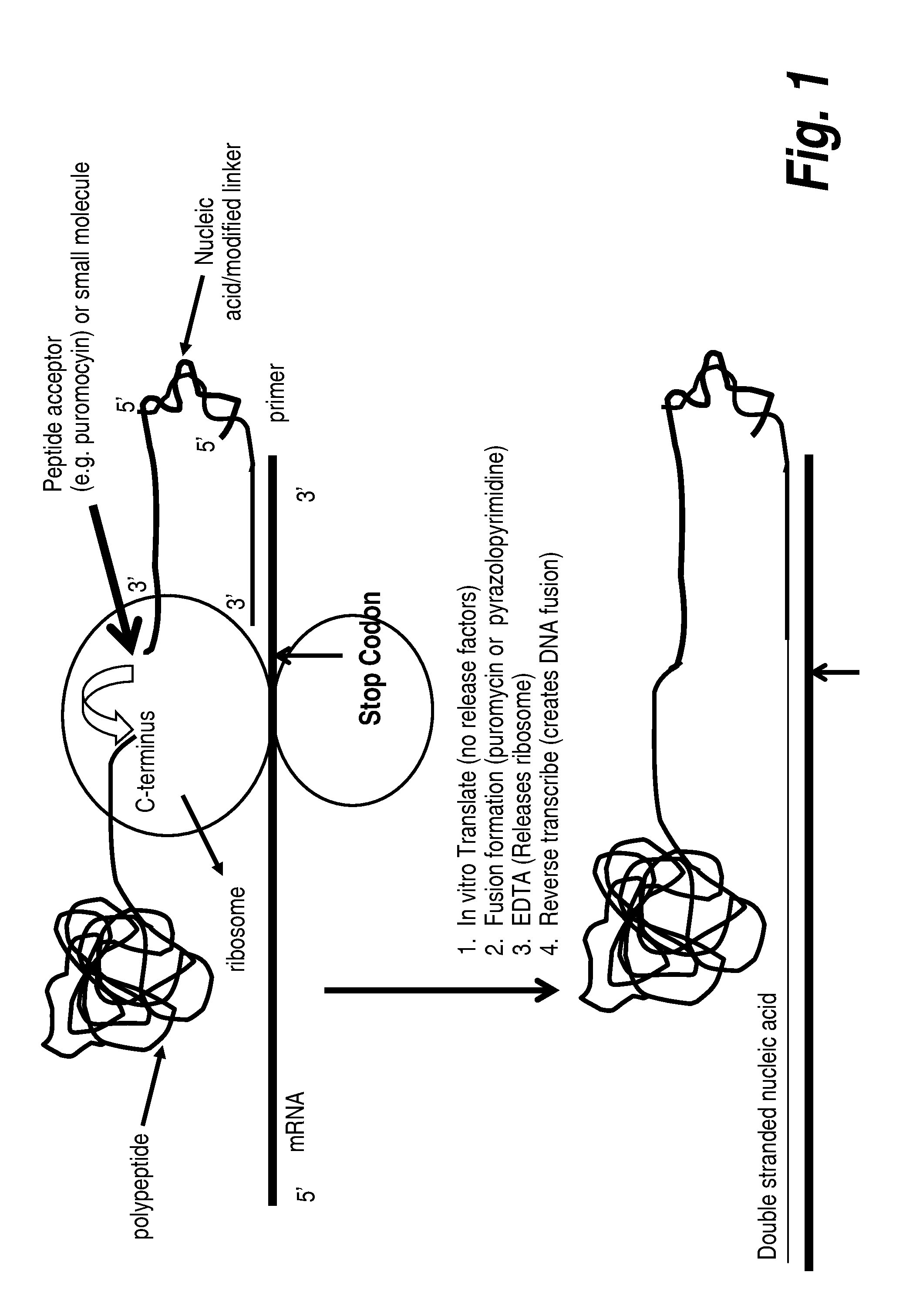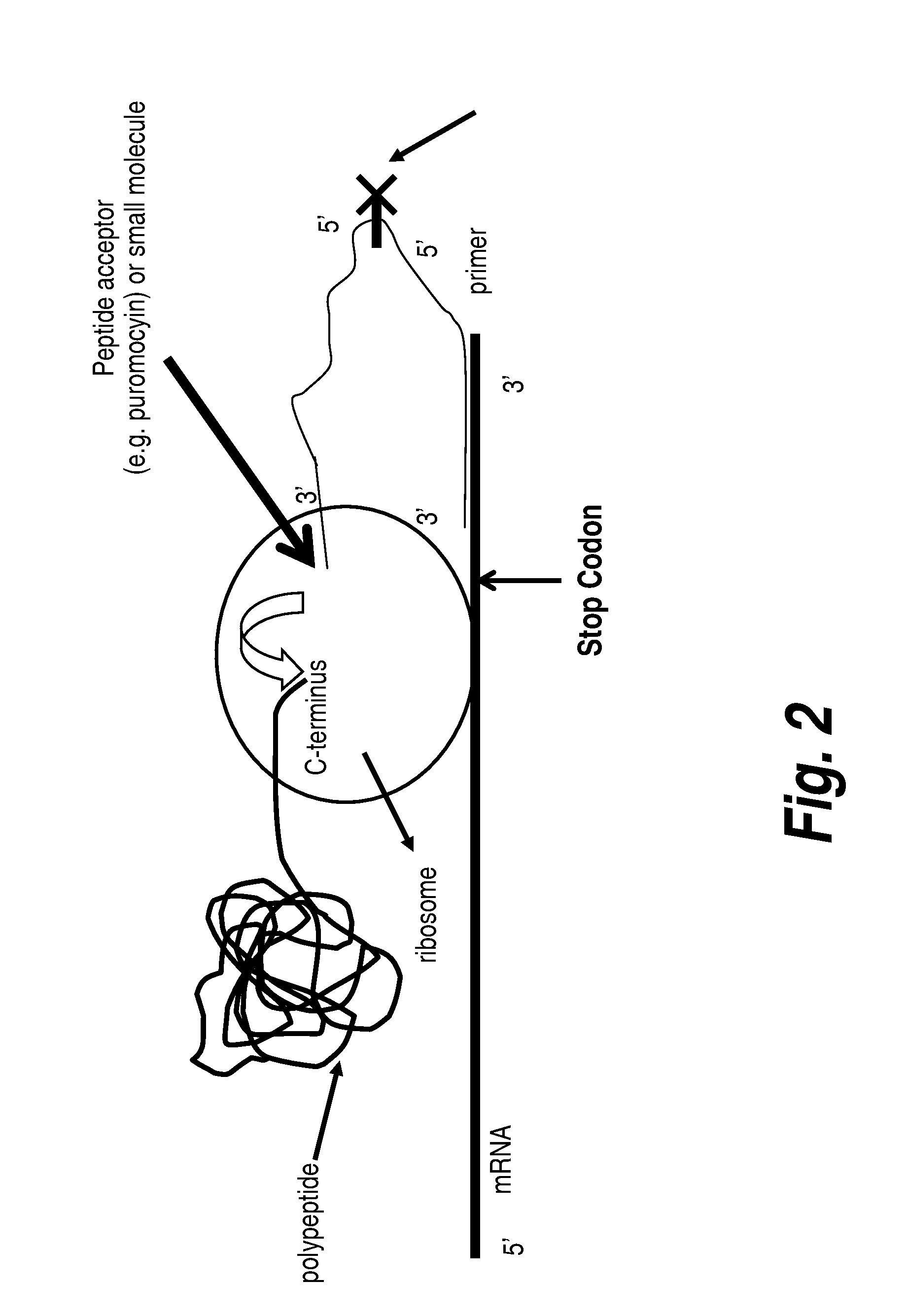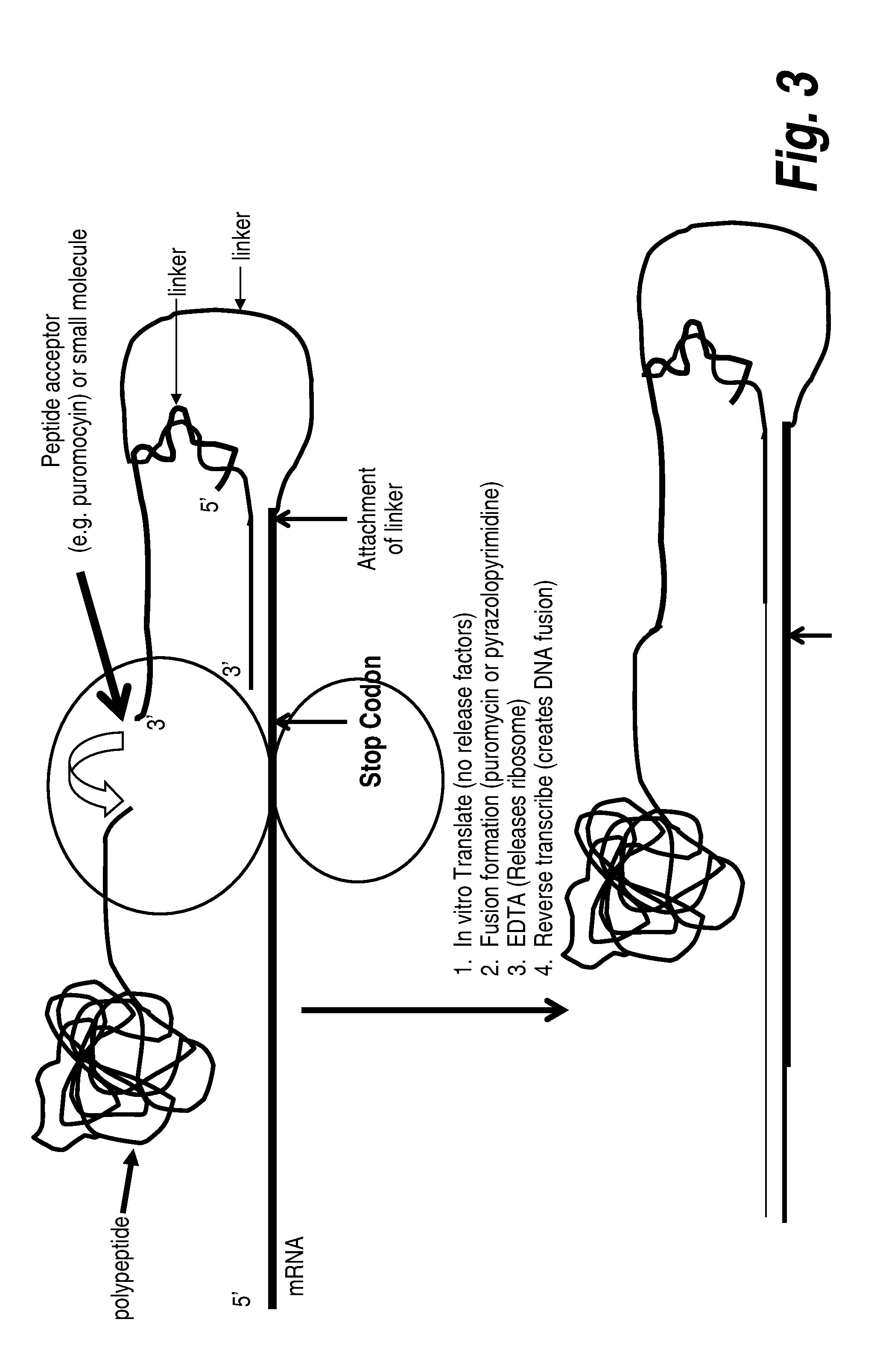Protein screening methods
a technology of protein and phage, applied in the field of protein screening methods, can solve the problems of mis-tagged fusion, phage display failure, ribosome or mrna display failure for this application, etc., and achieve the effect of improving properties
- Summary
- Abstract
- Description
- Claims
- Application Information
AI Technical Summary
Benefits of technology
Problems solved by technology
Method used
Image
Examples
example 1
Design and Construction of Naïve Antibody Libraries Sources of Cells
[0265]mRNA was obtained from whole bone marrow (10 donors), splenocytes (13 donors) and peripheral mononuclear cells (601 donors) of total 624 different healthy individuals, to ensure the diversity of the library. The calculated diversity of VH library is 109-1010 and VL library is 106-107.
Library Construction
[0266]RT-PCR was used for VH and VL library construction.
[0267]First strand cDNA was synthesized using specific primers from the H chain constant regions of IgM, IgG and IgA (C1, C1 and C1), and L chain constant regions of kappa and lambda (C1 and C).
[0268]For variable H chain library construction, multiple sense primers (degenerate primers) were designed from the FR1 regions of VH1-7 family members with an upstream UTR sequence (VH1-7UTR). The anti-sense primers for VH were designed from the constant regions nested to the primers for cDNA synthesis (C2, C2 and C2). For variable light chain library construction...
example 2
Production and Use of Streptavidin Display Libraries
[0272]This example describes the production and use of the streptavidin display libraries of the invention
Materials and Methods
[0273]In general, the practice of the present invention may employ, unless otherwise indicated, conventional techniques of chemistry, molecular biology, recombinant DNA technology, immunology (especially, e.g., antibody technology), and standard techniques of polypeptide preparation. See, e.g., Sambrook, Fritsch and Maniatis, Molecular Cloning: Cold Spring Harbor Laboratory Press (1989); Antibody Engineering Protocols (Methods in Molecular Biology), 510, Paul, S., Humana Pr (1996); Antibody Engineering: A Practical Approach (Practical Approach Series, 169), McCafferty, Ed., Irl Pr (1996); Antibodies: A Laboratory Manual, Harlow et al., C.S.H.L. Press, Pub. (1999); and Current Protocols in Molecular Biology, eds. Ausubel et al., John Wiley & Sons (1992).
Buffers
[0274]10× chemical ligation buffer: 250 mM Tris ...
PUM
| Property | Measurement | Unit |
|---|---|---|
| time | aaaaa | aaaaa |
| time | aaaaa | aaaaa |
| molecular weight | aaaaa | aaaaa |
Abstract
Description
Claims
Application Information
 Login to View More
Login to View More - R&D
- Intellectual Property
- Life Sciences
- Materials
- Tech Scout
- Unparalleled Data Quality
- Higher Quality Content
- 60% Fewer Hallucinations
Browse by: Latest US Patents, China's latest patents, Technical Efficacy Thesaurus, Application Domain, Technology Topic, Popular Technical Reports.
© 2025 PatSnap. All rights reserved.Legal|Privacy policy|Modern Slavery Act Transparency Statement|Sitemap|About US| Contact US: help@patsnap.com



